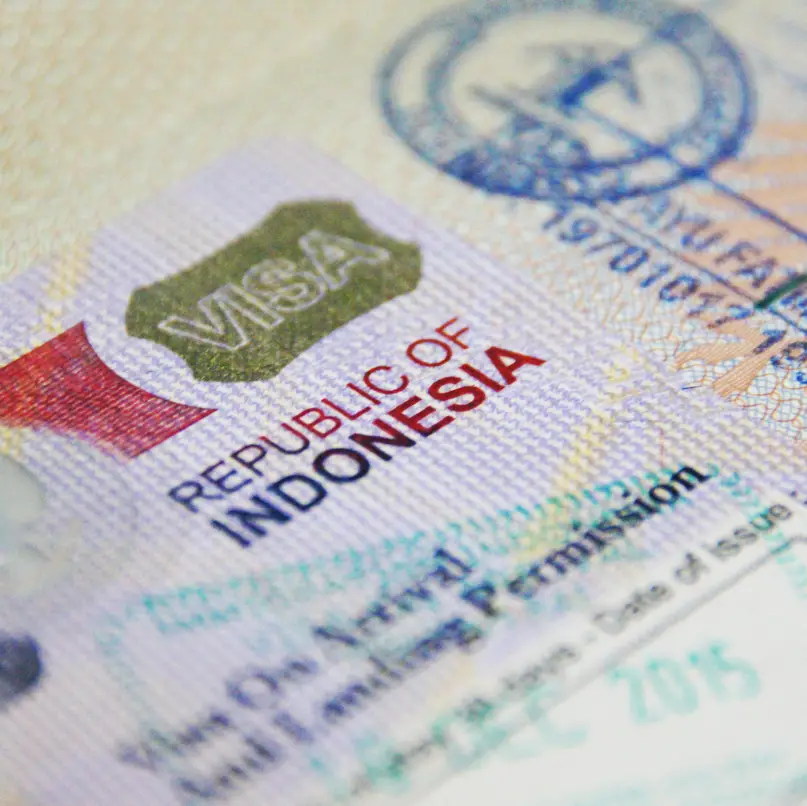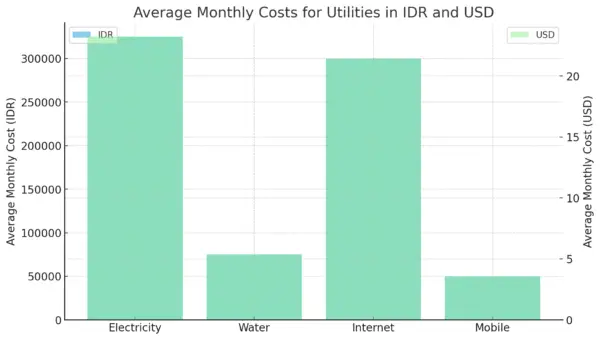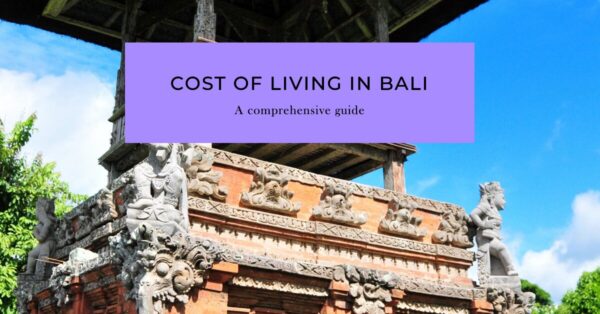Have you ever fantasized about ditching the 9-to-5 grind and moving to a tropical island paradise? You’re not alone. Bali has become the darling of digital nomads and location-independent entrepreneurs seeking an affordable, laidback lifestyle immersed in nature and culture.
But what does it actually cost to live in Bali in 2024?
Well, while the Indonesian island remains more budget-friendly than North America, Europe or Australia, increased inflation, fluctuating currency exchange rates, rising gas prices and tourism recovery from the pandemic have caused the cost of living in Bali to inch upwards.
To help you budget properly, I’ll outline realistic monthly cost estimates across key expenses for singles, couples and families in Bali’s most popular expat spots like Canggu, Ubud and Seminyak. And I’ll provide prices in both the local currency (Indonesian Rupiah or IDR) as well as USD equivalents.
So whether you’re a remote worker looking to recharge your batteries or someone uprooting entirely for an exotic long-term stay, stick with me to find out if moving to Bali aligns with your bank balance.
Spoiler alert: This island paradise won’t completely wreck your savings.
Visas and Legal Requirements

Foreigners looking to stay in Bali long-term need to navigate Indonesia’s visa rules and renewals.
Types of Visas
The main visas options are:
- Visa on Arrival (VOA) – 30-day single entry, must be extended
- Social Cultural Visa – Multiple entry 12-60 months
- Retirement Visa – Annual renewal required
Visa Costs
- VOA: IDR 500,000 (USD $34)
- Social Cultural, 12 months: IDR 2,500,000 ($170)
- Retirement, 12 months: IDR 1,000,000 ($68)
Visa Extensions and Renewals
VOAs need to be extended monthly at immigration offices for IDR 300,000-500,000 ($20-34) per person.
Long-term visas require annual renewals. Use agencies to avoid paperwork hassles.
So visa-related expenses can add IDR 5,000,000-10,000,000 ($340-$680) to annual living costs depending on family size.
Housing

Finding the right accommodation is fundamental when relocating to Bali. Fortunately, housing options abound across various budgets.
Accommodation Types and Average Rental Costs
Here’s an overview of popular housing choices and indicative 2024 rental rates:
- Private room in a homestay – IDR 4,000,000/month ($270)
- Studio apartment – IDR 7,000,000/month ($475)
- 1-bedroom house – IDR 10,000,000/month ($680)
- 2-3 bedroom villa with pool – IDR 30,000,000/month ($2,040)
Rental prices can go up to IDR 50,000,000 ($3,400) per month for larger, ultra-luxury villas in prime beachfront locations.
Impact of Location on Rental Prices
Location significantly impacts accommodation costs in Bali. Popular tourist areas like Seminyak and Canggu command higher rents due to high demand, and proximity to beaches and amenities.
In contrast, less touristy towns like Ubud in central Bali offer lower rental rates. However, they may lack facilities and require dealing with more locals as opposed to expat bubbles in coastal enclaves.
Here’s a snapshot of monthly rents for a 2-bedroom house across Bali’s most coveted neighbourhoods:
- Seminyak: IDR 22,000,000 (USD $1,500)
- Canggu: IDR 18,000,000 (USD $1,225)
- Ubud: IDR 12,000,000 (USD $815)
Tips for Finding Affordable Housing
- Head inland and North instead of sticking to the South
- Negotiate discounts for long-term leases
- Avoid peak tourism seasons when rates surge
- Partner up with a roommate to share costs
- Consider co-living spaces with shared facilities
Case Study: Tourist vs Local Areas
To illustrate rental variances, let’s compare prices in Seminyak, a tony beach resort area, to Sanur, a more local Balinese town.
For a 2-bedroom house, monthly rent in Seminyak starts around IDR 30,000,000 ($2,040). The same in Sanur costs IDR 15,000,000 ($1,020) – half of Seminyak. So opting for a less touristy area yields significant housing savings.
Food and Dining

From local Indonesian fare to international cuisines, Bali’s food scene has something for all tastes and budgets.
Local Cuisine at Warungs vs Western Fare
Warungs refer to small family-run eateries serving traditional Indonesian cuisine. A typical meal at a warung costs IDR 25,000-50,000 ($1.70-$3.40). In comparison, Western meals at restaurants average IDR 100,000-150,000 ($6.80-$10) per person.
So dining exclusively at warungs rather than restaurants can reduce food bills considerably.
Grocery Shopping: Local Markets vs International Supermarkets
Shopping for fresh produce and ingredients at traditional markets like Pasar Badung market and Sukawati market is significantly cheaper than buying imported items at Western supermarket chains.
For instance, 1 kg of tomatoes costs IDR 8,000 ($0.55) at the local market but IDR 15,000 ($1) at high-end grocers.
Expert Opinion: Nutritionist’s Take on Food Costs in Bali
Mark Bray, an Australian nutritionist in Bali, shares:
“Eating healthy in Bali can be affordable if you adapt to enjoying local produce from community markets and farms. But imported superfoods and specialty ingredients can inflate grocery bills. The key lies in achieving nutritional balance through locally available fare like fresh fruits, veggies, eggs and fish while sparingly using pricier imports.”
Transportation

Navigating Bali’s notoriously congested roads makes choosing the right transportation paramount. Here’s an overview of popular options and costs.
Scooter Rentals
Renting a scooter offers convenience and flexibility at an affordable rate of IDR 60,000-100,000 ($4-$6.80) per month. This makes it a popular choice, especially for solo travellers.
Renting vs Buying a Scooter or Car
While longer-term rentals are possible, buying a used scooter or car works out cheaper.
For instance, a used scooter costs IDR 4,500,000 ($306) while a 6-month rental of IDR 100,000/month totals IDR 6,000,000 ($408).
Availability and Costs of Public Transportation
Bali’s public bus network is limited. Bemos (minibuses) connecting key routes are equally infrequent.
Metered taxis like Bluebird group and mobile ride-hailing apps like Gojek offer more reliable public transportation, albeit at higher costs. Flagfall for Bluebird taxis is IDR 6,500 (USD $0.44) with minimum fare of IDR 40,000 (USD $2.72).
Utilities and Services

Utility expenses should be accounted for when budgeting living costs in Bali.
Average Costs of Electricity, Water, Internet and Mobile Data
Monthly electricity bills range IDR 150,000-500,000 ($10-34) depending on usage and unit size. Water bills add another IDR 50,000-100,000 ($3.40-6.80).
Unlimited internet plans start at around IDR 300,000 ($20) per month.
Local mobile data and calls can cost as low as IDR 50,000 ($3.40) monthly if minimizing usage.
So budget around IDR 600,000 ($40) monthly for basic utilities and connectivity.
Impact of Accommodation Type on Utility Costs
Standalone villas have higher electricity, water and internet expenses compared to apartments with shared resources. Using pools also spikes up utility outlays.
To illustrate, monthly utilities in a 3-bedroom villa with pool and AC may total IDR 1,500,000 ($102). But a 1-bedroom apartment’s utilities should not exceed IDR 450,000 ($30).
Healthcare
While Bali offers world-class hospitals and affordable basic care, complex treatments can get expensive for foreigners. Hence getting health insurance is a must.
Overview of Healthcare Costs in Bali
- Doctor consultation – IDR 200,000 ($14)
- Dengue fever treatment – IDR 7,000,000 ($476)
- Hip replacement – IDR 11,000,000 ($750)
- Psychiatrist visit – IDR 1,500,000 (USD $102) per session
- Premium health insurance – IDR 2,000,000 ($136) per person monthly
So having insurance cushions against medical contingencies.
Leisure and Entertainment

Beyond its natural and cultural riches, Bali also offers plenty of lifestyle perks from wellness activities to a buzzing nightlife.
Indicative Costs of Common Leisure Pursuits
- Yoga classes – IDR 100,000 ($6.80) per session
- Surfboard rental – IDR 100,000 ($6.80) per day
- Cocktails at beach clubs – IDR 150,000+ ($10+)
- Cultural performances – Free to IDR 200,000 ($14)
- Co-working spaces – IDR 200,000 ($14) per day
As evident, costs can vary widely depending on interests and penchant for luxury experiences.
Education

Bali has over 20 international schools catering to expat children. Tuition fees are steep but the high-quality education and facilities partly offset the costs.
Overview of Average Tuition Fees
- Preschool – IDR 300,000 ($20) per month
- Primary school – IDR 3,000,000 ($204) per semester
- Secondary/high school – IDR 4,500,000 ($306) per semester
Additional expenses like books, uniforms, transportation etc. can add over IDR 10,000,000 ($680) yearly.
Homeschooling and online schooling are cheaper alternatives.
Conclusion
The cost of living in Bali offers exceptional value compared to North America and Europe. By choosing locations wisely, leveraging seasonal discounts and restraining overindulgence, singles can live comfortably on IDR 7,000,000 ($476) per month.
Couples can reduce costs further by sharing accommodation. Factor in schooling costs for families. While lean living is possible on IDR 10,000,000 ($680) monthly, most expats budget IDR 15,000,000-25,000,000 ($1,020-$1,700) for a moderate lifestyle.
Ultimately, Bali rewards those who can balance prudence and enjoyment. Its tropical beauty, welcoming culture and improving infrastructure will continue making it an alluring second home for many.
So for those mulling over a Bali move, hopefully this guide has addressed some pressing questions on living costs. Feel free to reach out for any specific queries as you embark on your Bali journey.

